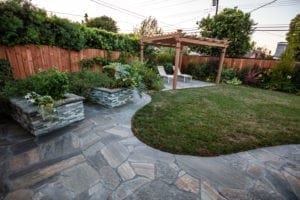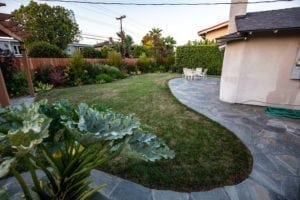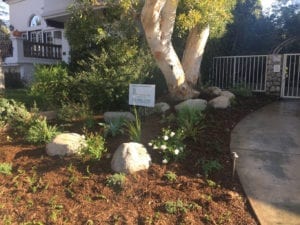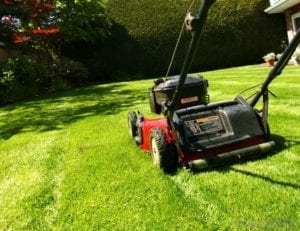In the vibrant city of Los Angeles, cultivating a thriving vegetable garden amidst water scarcity presents both an opportunity and a challenge. To ensure the longevity of your garden while conserving precious water resources, implementing effective water-saving techniques is essential. From mindful irrigation systems to strategic plant selection, there are numerous ways to foster a sustainable and bountiful garden that contributes to the conservation efforts within the community.
In this guide, we present ten practical water-saving tips tailored to the unique demands of gardening in Los Angeles. These tips not only aim to reduce water consumption but also promote the long-term health and productivity of your vegetable garden. By incorporating these practices into your gardening routine, you can play an active role in the sustainable cultivation of fresh produce while advocating for responsible water management within the city.
1. Install Drip Irrigation Systems
Drip irrigation systems deliver water directly to the plant roots, reducing water waste through evaporation and runoff. They also ensure that plants receive a consistent water supply, promoting healthy growth. Setting up a timer for your drip system allows you to water your garden efficiently, even when you’re away. Regularly check the system for clogs or leaks to maintain its effectiveness. Consider incorporating a rain sensor that automatically shuts off the system during rainfall to prevent overwatering.
2. Mulch Regularly
Applying a layer of mulch helps retain moisture in the soil, reducing the frequency of watering. Organic mulches, such as shredded leaves or straw, not only conserve water but also enhance soil fertility as they decompose. Keep the mulch layer at around 2 to 4 inches thick to effectively suppress weed growth and maintain soil temperature. Ensure that the mulch is spread evenly around the plants without touching their stems to prevent rot and disease. Replenish the mulch layer as needed, especially during hotter months when evaporation rates are higher.
3. Choose Drought-Tolerant Vegetable Varieties
Selecting vegetable varieties that are naturally adapted to arid conditions can significantly reduce water requirements in your garden. Opt for drought-tolerant crops such as certain types of beans, peppers, and leafy greens like Swiss chard and kale. Prioritize heirloom or native varieties that have evolved to thrive in the local climate without excessive watering. Consult with local gardening experts or extension services to identify the most suitable drought-resistant plants for your specific garden location. Implement proper planting techniques and provide adequate organic matter in the soil to support the growth of these resilient vegetable varieties.
4. Group Plants According to Water Needs
Grouping plants with similar water requirements together enables you to create specific watering zones within your garden. This practice allows you to tailor your watering schedule and amounts more accurately, avoiding both overwatering and underwatering. Consider the soil type, sun exposure, and individual plant water requirements when planning your garden layout. Use this technique to efficiently manage water distribution, ultimately promoting healthier plant development and reducing water waste. Be mindful of potential shade from larger plants that might affect the water needs of smaller neighboring plants.
5. Collect Rainwater
Harvesting rainwater through the use of rain barrels or cisterns provides a free and sustainable water source for your garden. Position the rain barrels strategically to capture maximum rainfall and place them on stable foundations to prevent tipping. Cover the barrels to prevent debris accumulation and to inhibit mosquito breeding. Consider incorporating a filtration system to remove impurities before using the harvested rainwater for your garden. Utilize this collected rainwater during dry periods to supplement your regular watering routine and conserve municipal water resources.
6. Time Your Watering
Water your vegetable garden in the early morning or late evening to minimize water loss due to evaporation during the hottest parts of the day. Morning watering ensures that the plants have adequate moisture to endure the heat of the day, while evening watering allows the water to seep into the soil without the risk of immediate evaporation. Avoid watering during windy conditions as wind can cause water to drift away from the intended target, leading to unnecessary water waste. Consider investing in a smart irrigation controller that adjusts watering schedules based on weather conditions to optimize water usage.
7. Monitor Soil Moisture
Regularly assess the moisture levels of your garden soil using a moisture meter or by performing a simple squeeze test. Adjust your watering schedule according to the soil’s moisture content to avoid waterlogging or drought stress in your plants. Take note of any areas with poor drainage that might require soil amendments or additional mulching to improve water retention. Implement a systematic approach to monitoring soil moisture, considering the specific water needs of different plants within your garden to promote healthy growth and efficient water use.

8. Practice Sustainable Gardening Techniques
Implement sustainable gardening practices such as composting, crop rotation, and companion planting to enhance water retention in the soil. Composting helps improve soil structure and moisture-holding capacity, reducing the frequency of watering required for your vegetable garden. Rotate your crops regularly to prevent soil depletion and optimize nutrient uptake, ensuring that plants can efficiently utilize available water. Companion planting techniques, such as intercropping with nitrogen-fixing plants, can create a balanced ecosystem that minimizes water loss through evaporation and enhances overall water efficiency in your garden.

9. Use Efficient Watering Tools
Utilize water-efficient tools like soaker hoses, watering wands, or handheld sprayers that allow precise water application to the base of plants. Adjust the water pressure to ensure that the water reaches the root zone without causing soil erosion. Opt for watering tools with adjustable flow settings to accommodate the specific water needs of different plant varieties. Regularly clean and maintain your watering equipment to prevent clogs or blockages that can lead to uneven water distribution and potential water wastage. Store your watering tools in a sheltered area to prolong their lifespan and maintain their optimal performance.
10. Regular Maintenance and Inspections
Perform routine inspections of your irrigation system, checking for leaks, broken components, or malfunctioning parts that may contribute to water wastage. Also, repair or replace any damaged hoses, connectors, or valves promptly to ensure efficient water delivery to your plants. Then, clean the filters and nozzles regularly to prevent blockages that can compromise the system’s effectiveness. Conduct periodic checks on the overall water pressure and flow rate to maintain consistent and uniform water distribution throughout your vegetable garden. Further, implement a maintenance schedule to stay proactive in addressing any potential issues and to uphold a sustainable water-saving practice in your garden.

Embracing these ten water-saving strategies will not only contribute to the prosperity of your own home vegetable garden but also demonstrate your commitment to sustainable and responsible gardening practices. By making a conscious effort to conserve water, you are not only nurturing your garden but also contributing to the preservation of this vital natural resource in Los Angeles. To add, with these practices in place, your vegetable garden can serve as a beacon of sustainability within your community, inspiring others to follow suit in cultivating a greener and more environmentally conscious city.
To find out more, check out How to Start a Backyard Remodel: 10 Easy Steps.







